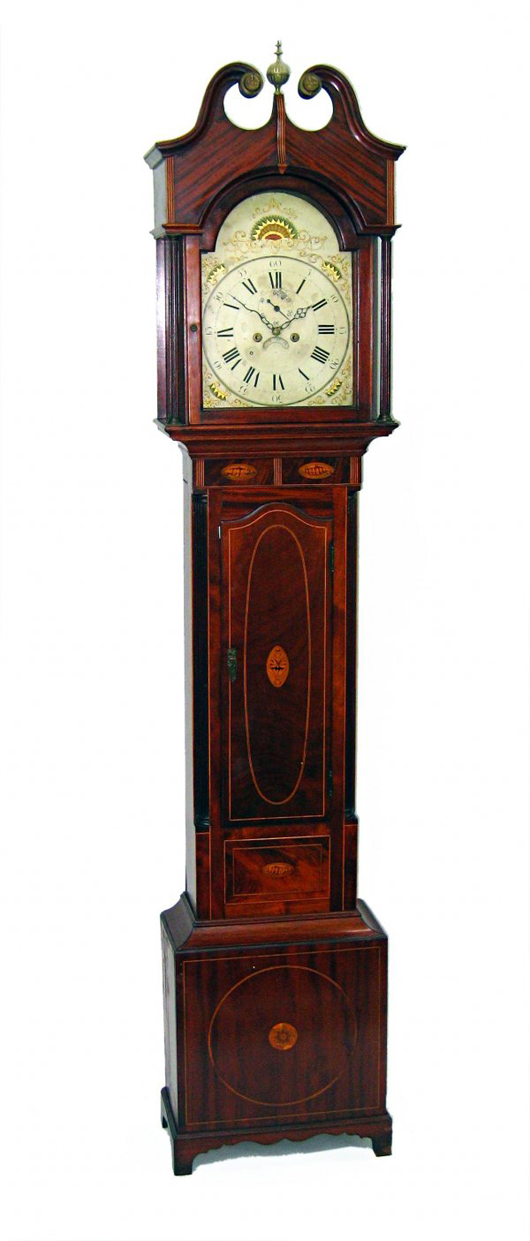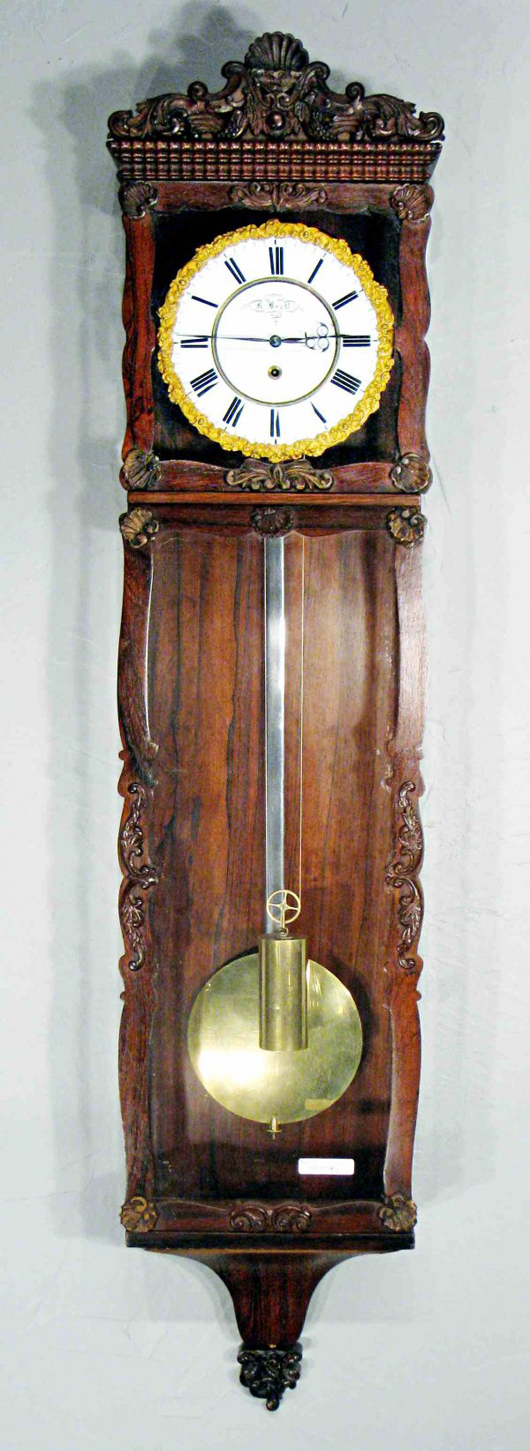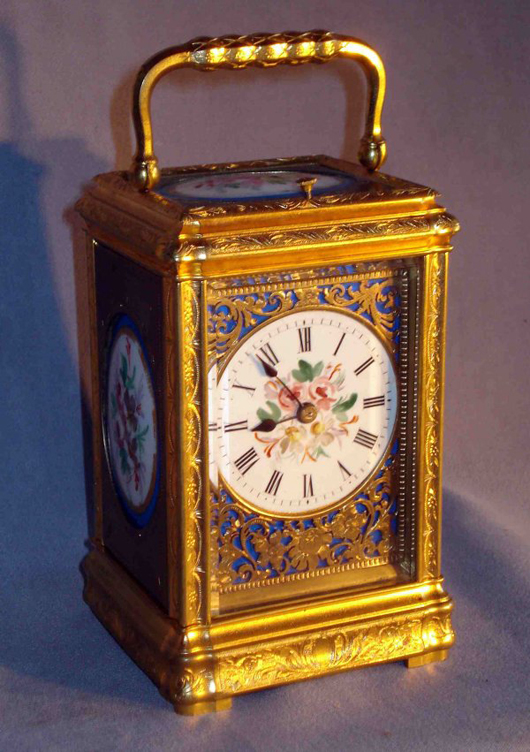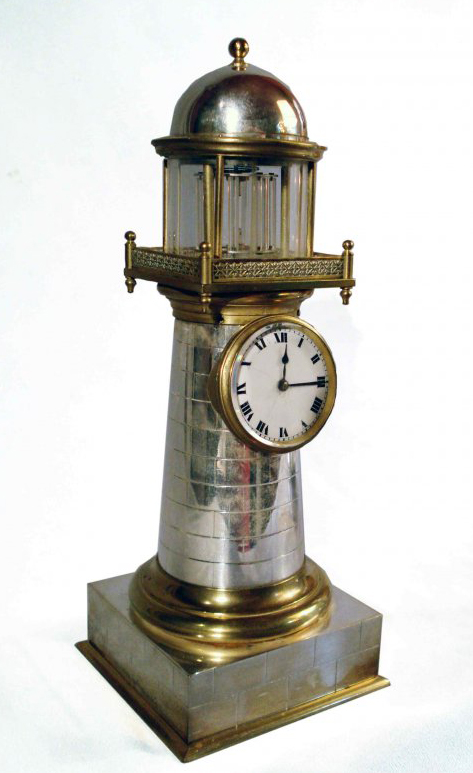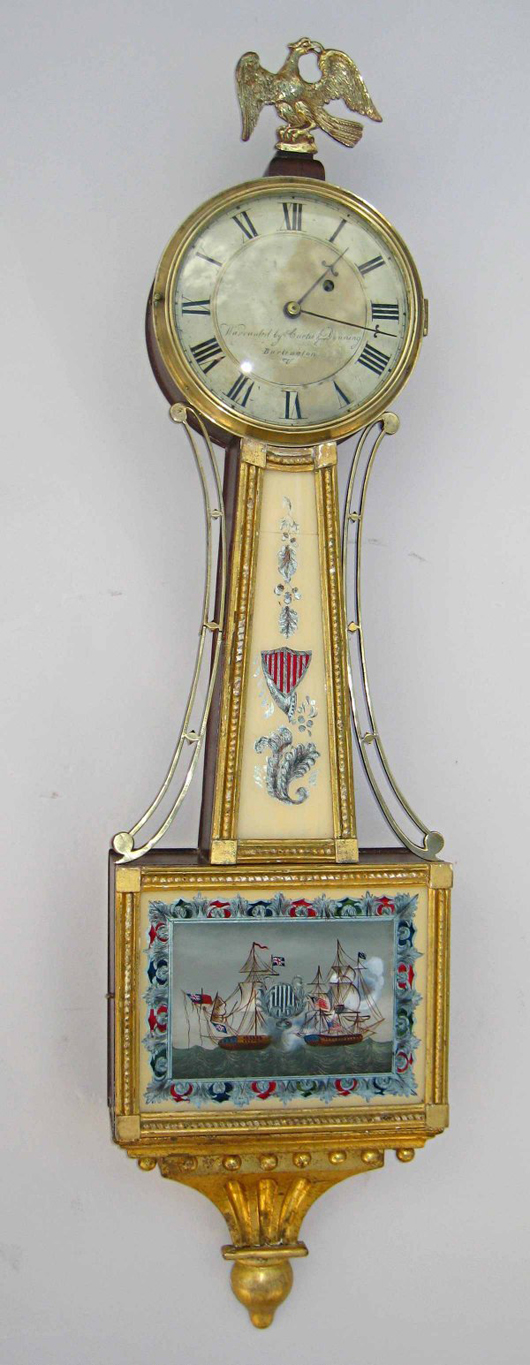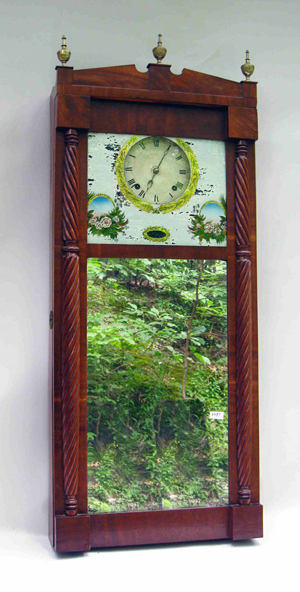
WAYNE, Pa. – A large and important wall-mounted mirror clock made by the New England clockmaker Joseph Ives (Bristol, Conn., 1782-1862) sold for $9,200 at an auction conducted by Gordon S. Converse & Co. on Dec. 29. This was the first auction dedicated exclusively to antique clocks and horology by Gordon S. Converse & Co., based in nearby Strafford, Pa. The sale featured nearly 250 lots.
The reverse-painted and mirror wood-cased clock, often referred to as a looking glass clock, was the top lot of the sale. Joseph Ives invented and patented the mirror clock, probably in the 1830s. He also invented the roller pinions used in clocks, and they were featured in this fine example.
“Although there has been a significant drop in demand for antiques and antique clocks over the last few years, this sale may have marked a point where the demand is slowly returning,” said Gordon S. Converse. “About half the total lots were wood shelf clocks dating to the early 19th century, and they all sold. Most came after spirited bidding, and in many cases the final price was higher than expected.”
About 100 people attended the auction at the Italian-American Club in Wayne, a Philadelphia suburb. In addition, more than 200 people registered online, with Internet bidding facilitated by LiveAuctioneers.com.
“More than one-third of the sales were to online bidders,” said Converse. “I was encouraged by that trend.” Phone and absentee bids were also taken.
Following are additional highlights from the sale. All prices quoted include a 15 percent buyer’s premium.
Three clocks topped the $6,000 mark. A fine Federal tall case clock with a solid mahogany case, probably New York or New Jersey, circa 1790-1810, chimed on time for $6,900. A looking glass shelf clock signed “Sawin” (John Sawin, Boston, 1810-1863), rare because of its strike mechanism, realized $6,038. A French industrial “lighthouse” clock, 22 inches tall and with an oscillating light at the top, hit $6,325.
A Federal banjo clock made in New England by William Cummens, who apprenticed for the renowned clockmaker Simon Willard, hit $5,175. A large chiming library clock from the turn of the 20th century garnered $2,588.
“That chime clock got more views than any other item on our website,” said Converse. “I’m surprised it didn’t sell for more.”
Three clocks brought identical sale prices of $4,025: a tall case clock in a fine Federal mahogany case with eight-day clockworks signed “Nathaniel Monroe, Concord” on the painted dial; a rare torsion pendulum clock by Aaron D. Crane (American, 1804-1860); and a fine gilt bronze encased 6 1/2-inch French porcelain paneled carriage clock with four Sevres oval inserts. The last two clocks went to foreign buyers.
A French-made industrial “lighthouse” clock from the late 19th century, plated with bronze, silver and gold and with an oscillating light at the top turned $3,450; a gilt wood and eglomise painted glass banjo timepiece signed Curtis and Dunning (Burlington, Vt.) made $3,162; and an Austrian wall timepiece with ripple molding and signed on the dial “H. Bertl, Wein” hit $3,105.
A fine double-dial calendar shelf clock, labeled Ithaca Calendar Clock Company, the 3 1/2 Parlor model, climbed to $1,955. A shelf clock by John Birge (Bristol, Conn., 1785-1862) brought $1,495.
A 37-inch mahogany marine barometer by L. Walker of England commanded $1,495.
A mahogany veneer double steeple shelf clock, labeled “Elisha Manross” and with a rare double fusee mechanism, sold for $1,265. A rare balance wheel-operated, spring-driven, painted cast-iron and nacre inlay 10 1/2-inch cottage timepiece signed by Noah Pomeroy (Bristol, Conn., 1813-1896) stopped at $460. A wood-front rectangular shelf clock by J.C. Brown (Bristol, Conn.) finished at $402.50.
One lot that did not fetch a high dollar figure but was interesting nonetheless was a 20th-century pillar and scroll clock labeled Elmer Stennes, which sold for $258.75. Stennes was the infamous Weymouth, Mass., clockmaker convicted of manslaughter after shooting his wife to death in a domestic dispute in 1968, and who was himself murdered in 1975.
Gordon S. Converse & Co.’s next vintage clocks and horology auction is tentatively scheduled for June. For details phone 610-722-9004, e-mail Gordon@ConverseClocks.com or visit the Web sites
www.AuctionsatConverse.com or www.ConverseClocks.com.
Click here to view Gordon S. Converse & Co.’s complete catalog.
ADDITIONAL LOTS OF NOTE
